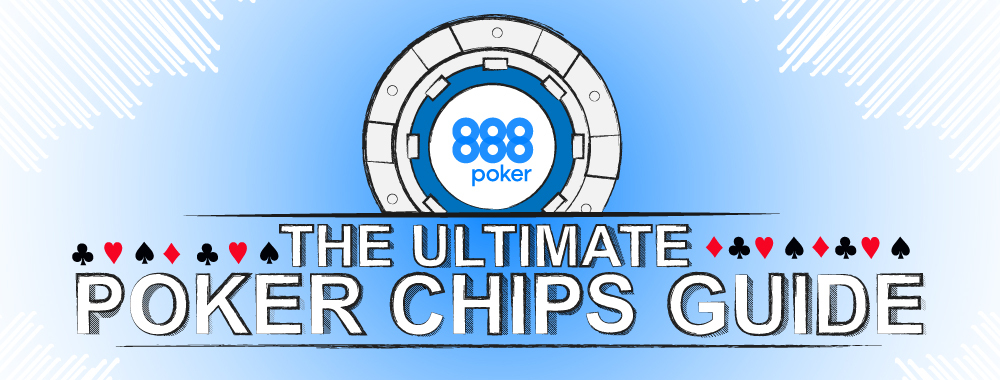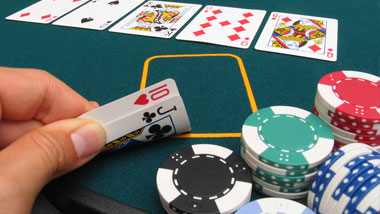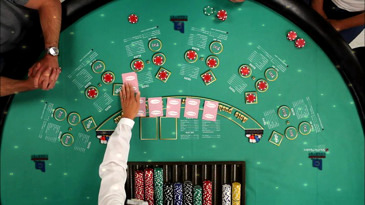Who Invented Poker
Hi all, I hope you have enjoyed the Easter. Today we´re going to talk about history. Have you ever wondered when was poker invented? Where was it invented? I thought it might be interesting for you to know something about the history of poker, so that´s the topic of today´s post.
Poker Origins Make It Accessible to a Wider Demographic. Until the internet poker boom in the 2000s, the USA pretty much owned the game that it had developed over the two hundred years before the world-changing event. But when poker went online, it became accessible to people all over the world. The Reuben: In 1925, Omaha, Neb. Grocer Reuben Kulakofsky reportedly came up with the idea of the corned beef and sauerkraut sandwich to feed his fellow poker players.The dish eventually landed on the menu of a local hotel (although Reuben's Restaurant and Delicatessen in New York City claims the sandwich was its own invention).
Poker has a long history, so today I´m going to focus on the dawn of poker in the 19th century and early 20th century. Yes, we are going all the way to the wild, wild west. But before that, we actually need to visit Europe in the 18th century.
Poque In Europe And New Orleans
It is said poker originates from a domino game played in China in the 10th century. Playing cards were not even invented at that time. However, the card game closest to the modern poker comes from Europe.
Modern poker originates from a European card game poque. Poque was played in France already in the 18th century. French colonists took the game to America. New Orleans became part of the United States in 1803. By the 1820´s, poque had become very popular in New Orleans.
Poque was different from the modern poker games. Poque was a very simple game. It was played with a deck of 20 cards instead of 52. Each suit only had an ace, king, queen, jack and ten. Five cards were dealt to four players. Then there was a betting round. Finally, each player still in the hand showed their cards, and the best hand won. The only hands in poque were four of a kind, three of a kind, a pair and a full house.
In the 1820´s, playing poque on riverboats on Mississippi became popular. Gambling was illegal in many states, but not on riverboats. Playing cards on the riverboats was all about cheating. It was even believed to bring bad luck, if there were no con men on board.
The Southern planters used their slaves as gambling stakes. Compared to that, the con men were not so bad.
The Rise Of Modern Poker – 52 Card Deck, Flush And Straight
In the mid 19th century poque got the English name poker, and the game became more like the modern poker. You could say the answer to the question “When was poker invented?” is around here. Texas Hold´Em was not invented yet, but the oldest version of poker was 5 card draw, which is still played today. Read more about 5 card draw and other poker variations on this post.
A 52 card deck replaced the old one which only had 20 cards. Now more than four players could join the game. The flush and straight were included in the hand ranks. The soldiers in the American civil war played poker and brought the game to their homes when the war ended. Poker became popular across the United States.
Strange Rules
The rules of poker were not very stable in the late 19th century. There were some hand ranks which are not recognized in modern poker. A seven high was called a “Tiger” and it beat the straight. You could also have a “Blaze”, which meant having five picture cards. This was better than two pair.
Sometimes there was an “Around-The-Corner-Straight” (for example J-Q-K-A-2) which was ranked higher than 3 of a kind, but lower than a regular straight. There could also be a “One-Gapper-Straight” (for example 5-7-9-J-K), higher in hand rank than 2 pair, but lower than 3 of a kind.
Poker could also be played with “deuces wild”, a rule familiar from video poker. This means all 2s were wild cards, which could be used as any cards. This means you could also have 5 of a kind.
The Wild West And Card-Sharpers
When we think about the wild west in the late 19th century, most of us instantly think about the card players gambling in the saloons. The poker games in the west were far from fair. Like in the Southern riverboats, cheating was an essential part of gambling in the wild west.
In fact, cheating was so common, that there was an industry making equipment for card-sharpers. There were small mirrors hidden in rings and cigarette boxes for peeking at other player´s cards. Different kind of tumblers were used in order to pull cards in to a sleeve.
Many card players did not take being cheated lightly. They attacked the card-sharpers with guns and knives. Poker gained a violent reputation because of this. It actually took a long time for that reputation to fade.

Poker Was Banned – Again.
Maybe it was because of the reputation of the wild west gamblers, that lead to gambling being banned across United States starting from the late 19th century. Poker became a more private game played between friends and families.
Home games resulted in new elements of poker being invented again. Dealer´s choice, lowball and hi-lo variations were introduced.

The Dawn Of Texas Hold´Em


In the 19th century, the poker games played were draw and stud poker games. Texas Hold´Em poker saw the daylight in Robstown, Texas in the early 20th century. There is a story about 12 farmers who wanted to play Stud poker, but they only had one card deck. One of them figured out they could all play, if five community cards were dealt on the table and each player would only get two hole cards.
I do n´t know if this is a true story, but it does make sense to me. Is this not exactly how games are often developed – from practical needs of common people willing to entertain themselves?
Welcome To Fabulous Las Vegas, Nevada.
So there were anti-gambling laws across United States. Gambling was also banned in Nevada in the 1910´s. However, in court it was legislated, that Texas Hold´Em was a game of skill, while Stud poker was more based on Iuck. Because of that, Stud poker should be banned, but not Texas Hold´Em.
In 1931, Nevada legalized gambling. Las Vegas became the casino capital attracting tourists in the middle of a desert. Poker also became a casino game.
From Riverboats To Casinos – And Where Next?
Poque, a card game played with only 20 cards traveled from France to New Orleans and was played in the Mississippi riverboats in the 19th century. Later, this game got the name poker and the 52 card deck, flush and straight became elements of poker.
Poker was played in the wild west in saloons filled with cards-sharpers. There were many strange rules in poker back then, and poker gained a violent reputation because the card players often carried guns and knives.
Anti-gambling laws were made, and Texas Hold´Em was born in the early 20th century. Nevada made gambling legal in 1931 and poker became a casino game. Las Vegas started attracting gambling tourists.
Poker History And Facts
This is where we finish today. Next time, we will continue with the history of poker in the 20th century. There was the World War II, and the role of Las Vegas was important in making poker as popular game as it is today.
See you in History of Poker Pt. 2!
Who Invented Poker Cards
You may still not know the exact year, but now you should have a better idea when was poker invented. If you have any thoughts on the topic, please share them in the comment section below.



